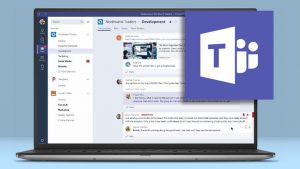In the new remote work landscape, video conferencing platforms have become an essential component of keeping workforces connected—and the competition is stiff between several companies. Big tech veteran Microsoft is hoping to appease current users and attract new adopters by eliminating one of the most common, and least spoken of, distractions in video conferencing: your own face. Many customers have issued complaints about Microsoft Teams’ static Self View, which they cite as an unnecessary distraction during video calls, and the company is working on providing an easy fix such as a toggle switch.
These grievances are not exclusive to Microsoft Teams. Zoom, the number-one video conferencing platform by market share, recently introduced Focus Mode, which attempts to eliminate distractions with features that can switch off or minimize the viewer feed. As part of its product roadmap, Microsoft is also introducing a new feature that lets users grant permissions to third-party apps within the Microsoft Teams platform. Microsoft Teams boasts a number of advantages as a comprehensive collaboration platform, but it trails Zoom and Google Meet in the market. The platform’s market share has grown 5% from 2020, and the company hopes to maintain that development trajectory.
























